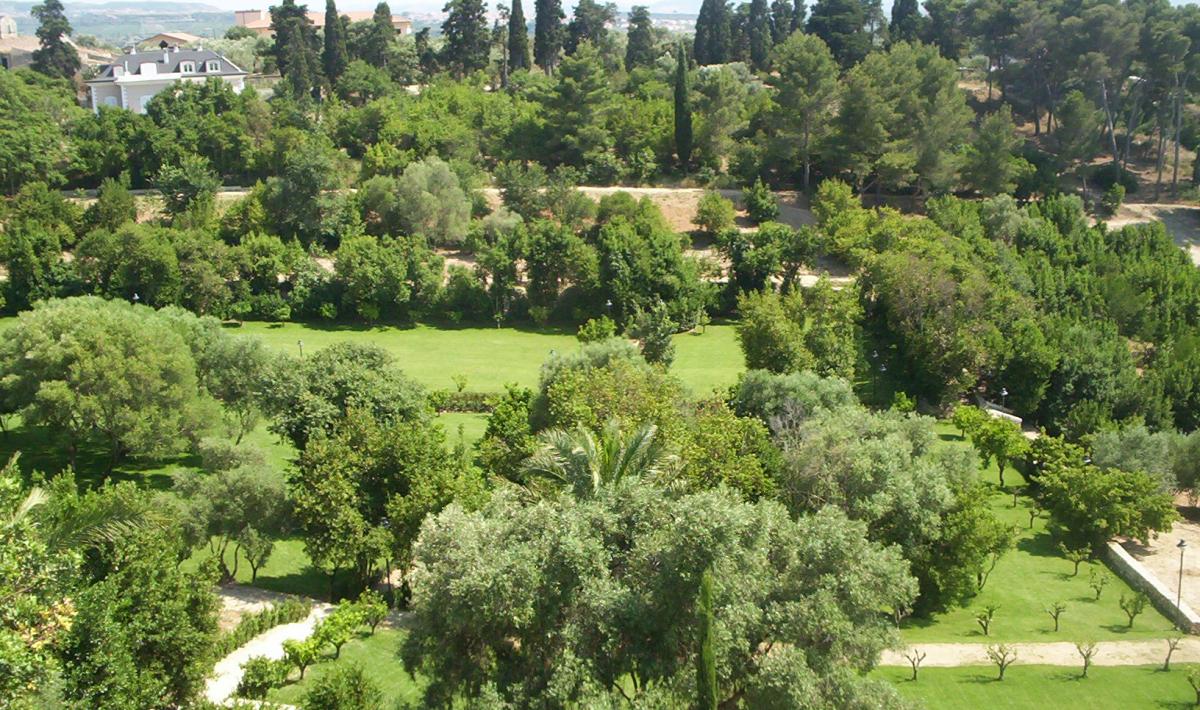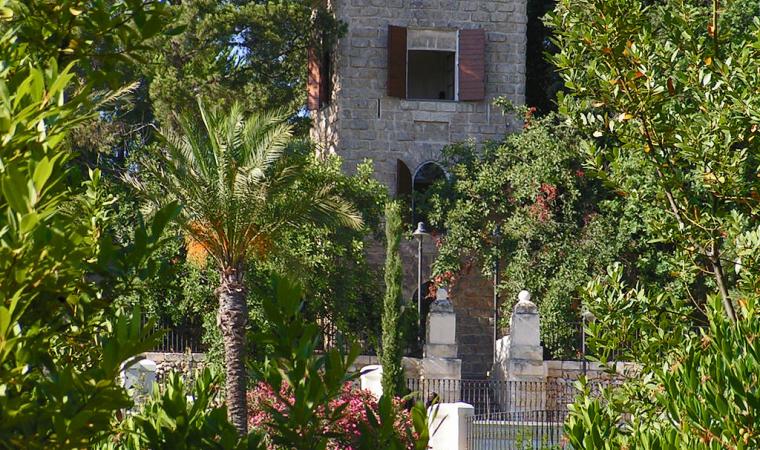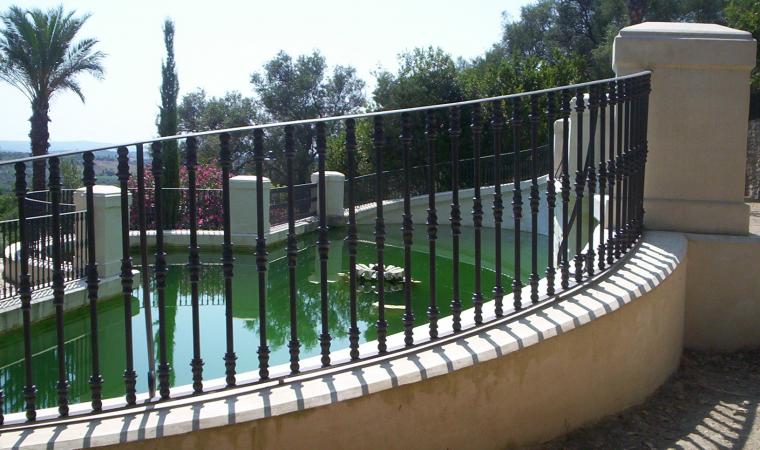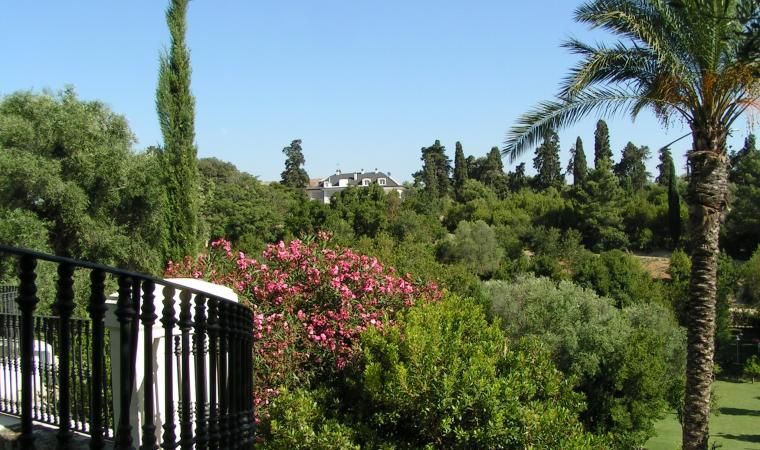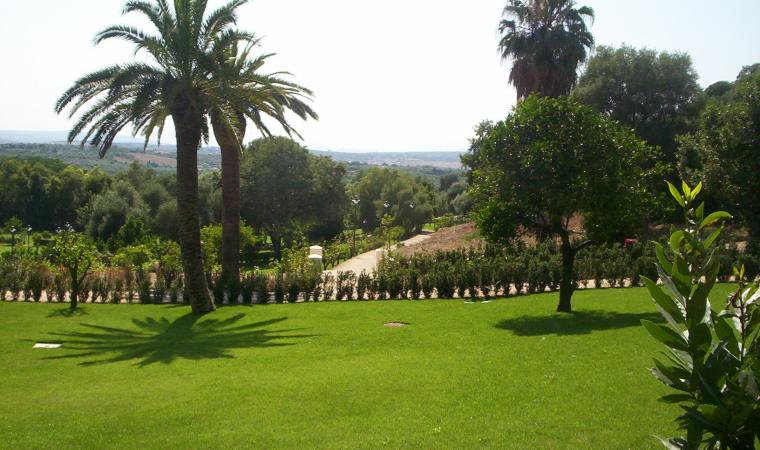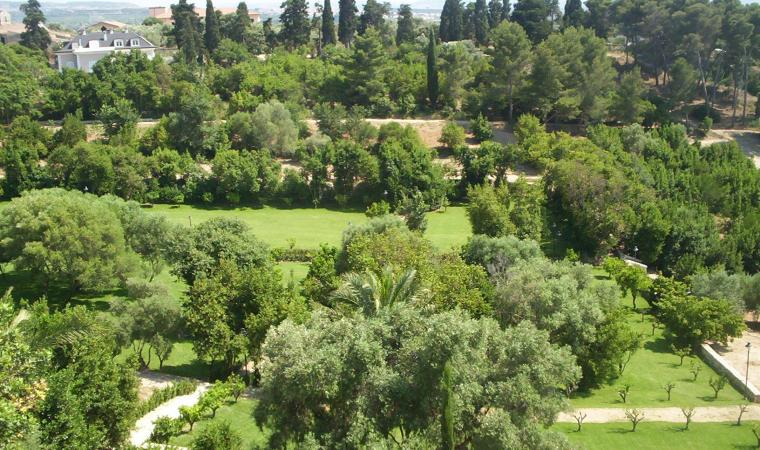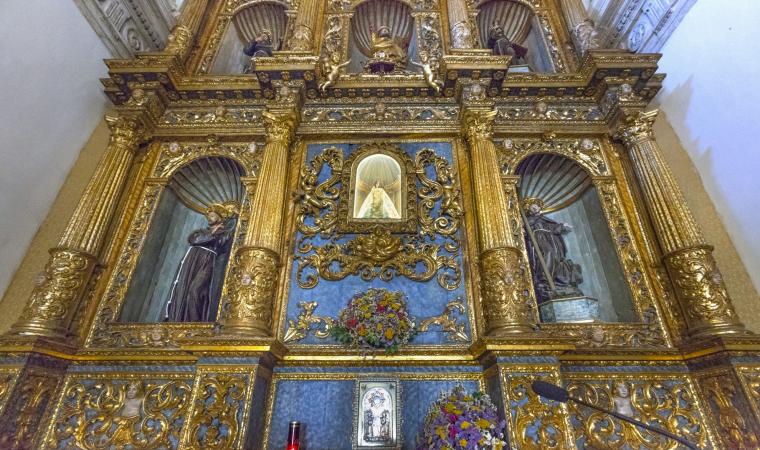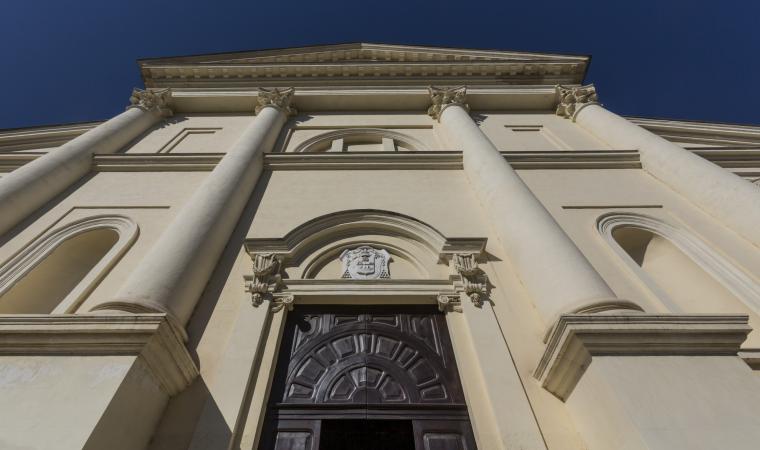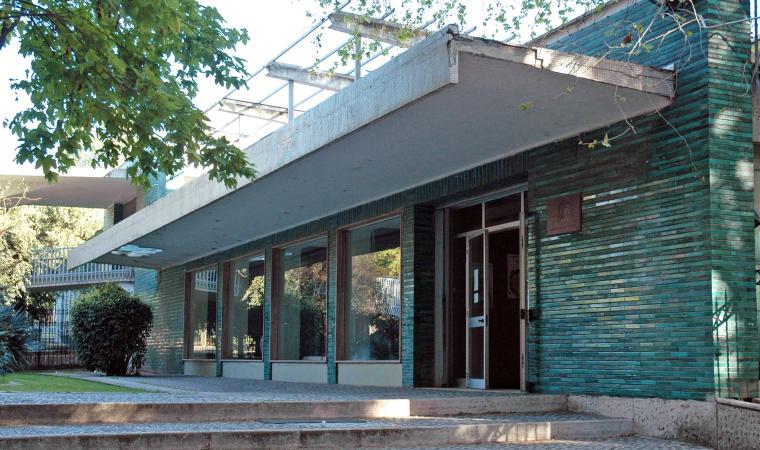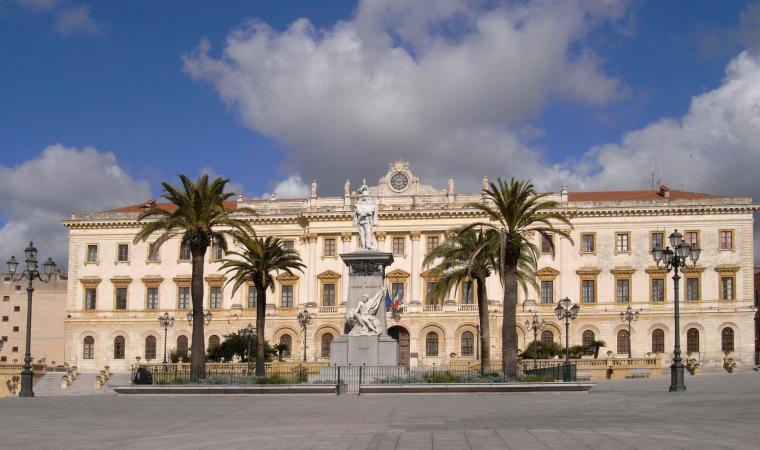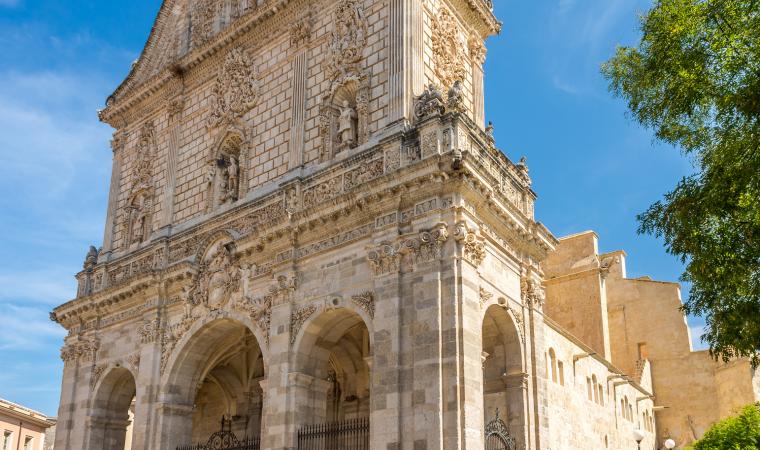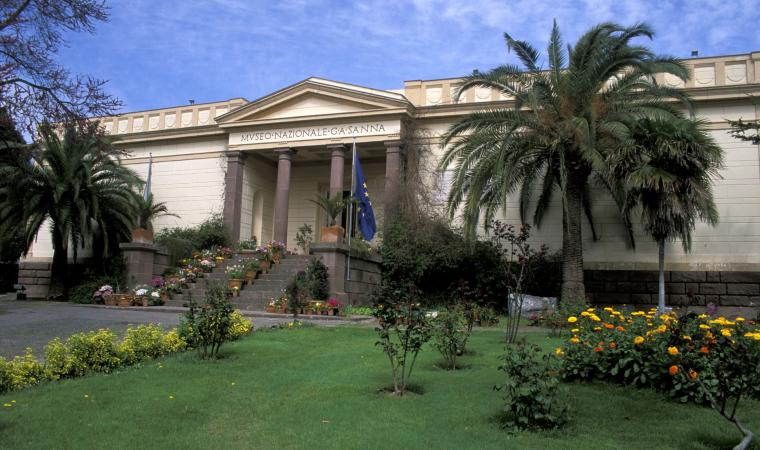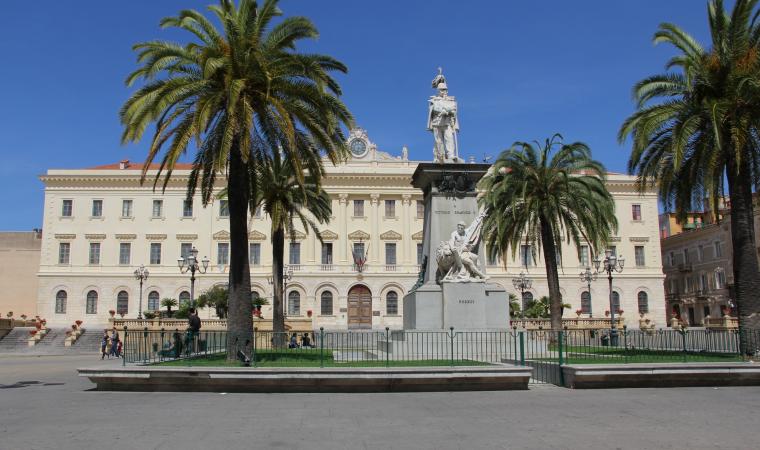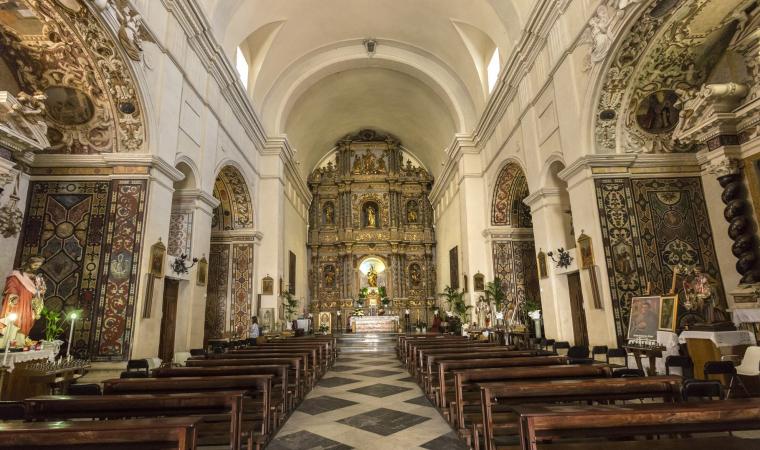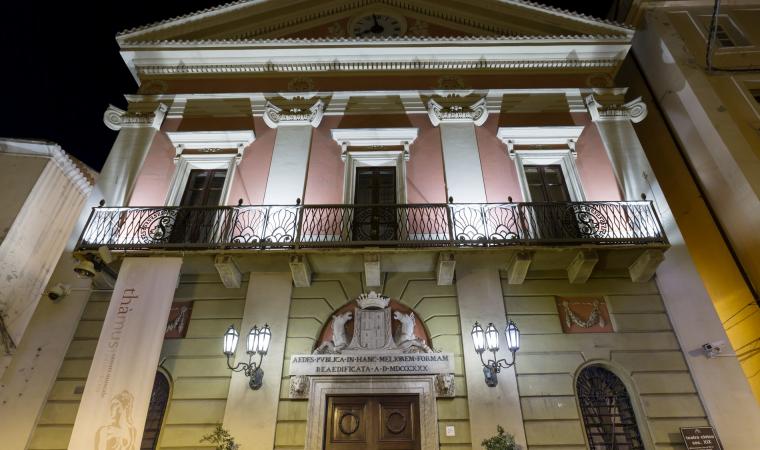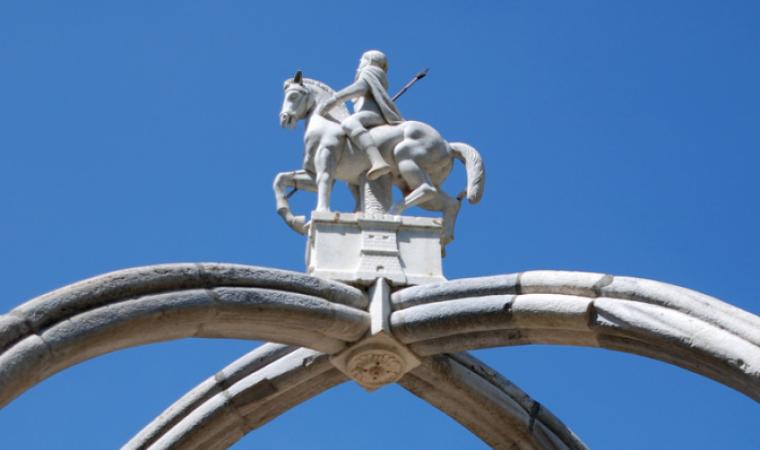Once the main aristocratic holding in the city, it is now six hectares of parkland with both natural and historic heritage, including an elegant monumental garden. Walking through the Monserrato park, nestling in a basin in the south-western suburbs of Sassari and restored to its former splendour in 2007 after extensive works, is like plunging into the past: the paths evoke the most important moments of its history, from its creation in the 17th century through to the 20th century. Over three and a half centuries, the park evolved from the original farmland to a refined garden with infinite plant varieties and architectural works embellishing the tree-lined paths. Walk through lindens, holly oaks, carobs, cypresses and pines. In the centre are six islands planted with orange trees. The irregular shape and variety of plantlife create unexpected clearings and "glimpses" with views over the city. Palms and erythrina plants alternate with olives and oleasters, citrus trees and pomegranates, box, horse chestnut, magnolias, willows, pistacia and Mediterranean plants. The park is further enhanced by the buildings constructed by the aristocratic families who owned it. The first of these was the Navarra family, Valencian merchants, followed by the Deliperi, including Giacomo Deliperi, the first mayor of the capital after the union between Piedmont and Sardinia. From 1866, it passed to deputy Giovanni Antonio Sanna, a cultured gentleman who was friends with Mazzini and Garibaldi; he was responsible for extending the "manor" and adding architectural features. He was followed by Baron Giordano Apostoli, who embraced the neo-Gothic ideals of Romanticism, erecting features such as the "Torre di Caccia" and the "Belvedere pond". This was the peak of its splendour. From 1921, the last owner was Nicolò Marquis of Suni (in Planargia).
A shady path through the olive grove leads to the "Green basin", and on to the "water temple" terrace, nearly ten metres long and six and a half high, in Neoclassical style. It appears almost unexpectedly, with a severe purity of line contrasting with the welcoming play of water. The facade is characterised by a portico with four limestone columns and vaulted ceiling. The temple overlooks a valley with a "nyphaeum" at its centre - a pool in the form of an elipsis decorated in Neoclassical style, nearly nine metres long and four wide. Continue on through the "linden walk" to the "house": from here, you can lean on the panoramic belvedere that leads onto "cypress walk". Don't miss the Neoclassic works added in the late 19th century, starting from the "frog pool", more than thirty metres long and ten wide. Resting sinuously against the slope, it is in perfect harmony with its natural setting. In the centre of the wall, water spurts from a vaulted passage. A short stairway leads to the monumental "Torre di Caccia", 14 metres high, with Guelph battlements. A narrow staircase climbs to the terrace, which offers a view that stretches as far as the sea. The lines of the facade are severe, although the building as a whole retains a softness. The "Caccia pool" acts as a wing to the water temple, emphasising its slight slope. Both the tower and the pool fit harmoniously into the overall complex of trees, lawns and paths as they slope gently down towards the valley. From the park, you can explore an ancient royal city: Fontana di Rosello, Piazza d’Italia and the Cattedrale di san Nicola di Bari are emblems of Sassari history and art.

